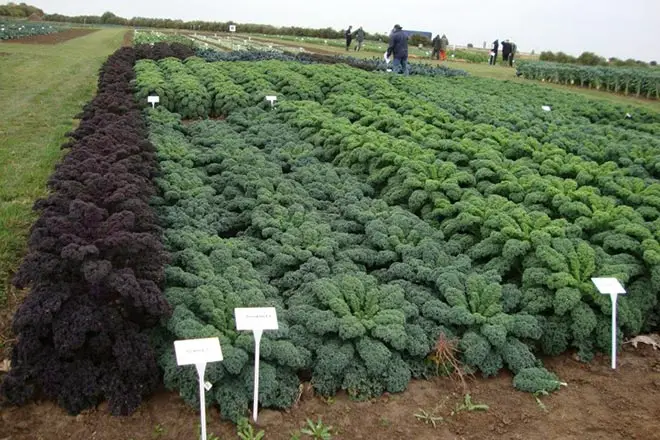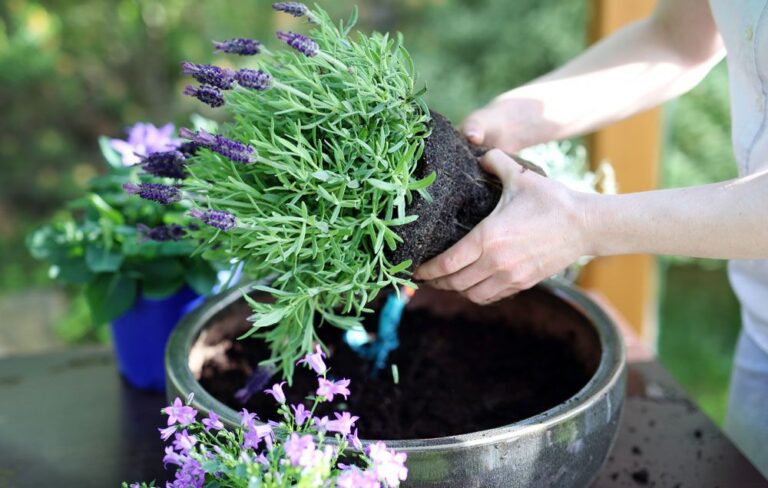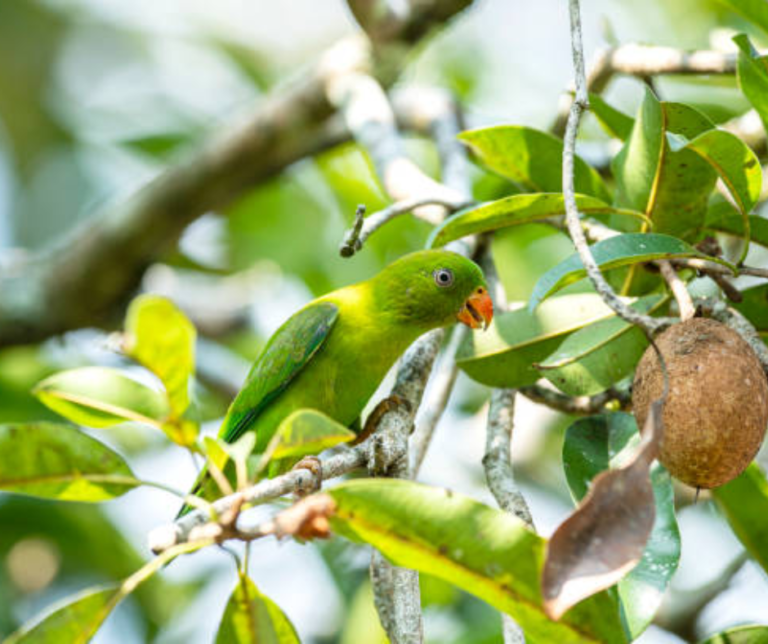Clover Cover Crop Options and Methods
Table of Contents
Potential Clover Species for Cover Cropping
Red Clover (Trifolium pratense) is one of the most popular clover species used for cover cropping due to its exceptional nitrogen-fixing capabilities and ability to improve soil health. This perennial legume is known for its deep root system, which helps to break up compacted soil and increase water infiltration. Red clover is also valued for its rapid growth and ability to suppress weeds, making it a valuable addition to any cover cropping rotation.

White Clover (Trifolium repens) is another common clover species utilized for cover cropping, especially in mixtures with grasses for pasture and forage purposes. White clover is known for its high palatability and nutritional value, making it a favorite among livestock farmers. Additionally, white clover has a low-growing habit, which helps smother weeds and provides ground cover to prevent soil erosion. Its ability to fix nitrogen naturally contributes to soil fertility and overall crop productivity.

Benefits of Clover Cover Crops
Clover cover crops offer a multitude of benefits for enhancing soil health and promoting sustainable agricultural practices. One significant advantage of incorporating clover into crop rotations is its ability to fix atmospheric nitrogen into the soil through a symbiotic relationship with rhizobia bacteria. This nitrogen fixation process enriches the soil with essential nutrients, reducing the reliance on synthetic fertilizers and promoting long-term soil fertility. Additionally, clover cover crops act as natural weed suppressors, competing with unwanted plant species for resources and minimizing the need for herbicides. The dense root systems of clover also help improve soil structure, reducing erosion and enhancing water infiltration, crucial for maintaining healthy and productive soils.
Here are the benefits of using clover cover crops, presented in a tabular format:
| Benefit | Description |
| Nitrogen Fixation | Clover, like many legumes, has a symbiotic relationship with soil bacteria that allows it to fix nitrogen from the air. This nitrogen enrichment benefits the soil and subsequent crops. |
| Soil Protection | The extensive root system of clover prevents soil erosion and improves soil tilth. |
| Weed Suppression | Clover helps suppress weeds, reducing competition for nutrients and space. |
| Attracts Beneficial Insects | Early flowering clover varieties attract beneficial insects, aiding pollination and pest control. |
| Green Mulch | Clover produces abundant green, leafy material, serving as an effective green mulch. |
| Adaptability | Clover grows well in various soil types and conditions, making it a widely adaptable cover crop. |
| Livestock Feed and Forage | Besides cover cropping, clover is used as livestockfeed and provides forage for wildlife. |
Factors to Consider When Choosing Clover Cover Crops
When choosing clover cover crops for your agricultural or gardening needs, there are several crucial factors to consider. Firstly, the climate and soil conditions of your specific area play a significant role in determining which clover species will thrive best. Different clover varieties have varying preferences for sunlight, moisture levels, pH balance, and temperatures, so it’s essential to match the species with your local environment to ensure optimal growth and performance.
In addition to environmental factors, you should also consider the primary purpose of incorporating clover cover crops into your rotation. Some clover species are better suited for nitrogen fixation, while others excel in weed suppression or improving soil structure. By identifying your specific goals and objectives for using clover cover crops, you can select the most suitable species that align with your desired outcomes and agricultural practices.
When selecting clover cover crops, the following factors are to be considered.
| Factor | Description |
| Type (Annual vs. Perennial) | Choose between annual or perennial clover based on your needs. Annual varieties are suitable for cover cropping, as they can be fully killed before planting your garden. Perennial clovers work best for livestock forage or permanent erosion protection. |
| Climate | Consider the local climate conditions. Different clover varieties thrive in varying climates, so choose one that suits your region. |
| Soil Type | Clover adapts well to different soil types, but some varieties may perform better in specific soils. Assess your soil type and select accordingly. |
| Foot Traffic | If the area with clover cover will experience foot traffic, opt for a variety that can withstand it without significant damage. |
| Aesthetic Preferences | Clover comes in various species, each with unique characteristics. Consider your aesthetic preferences—whether you want vibrant flowers or subtle green foliage. |
| Purpose (Nitrogen Fixation, Erosion Control, etc.) | Define your goal for using clover. Are you aiming for nitrogen fixation, soil protection, or other benefits? Choose a variety aligned with your purpose. |
| Cover Cropping Window | Timing matters. Plan when to sow clover based on your crop rotation and growing season. |
| Termination Method | Decide how you’ll terminate the clover cover crop. Will you mow it down, plow it under, or use another method? |
Best Practices for Planting Clover Cover Crops
To ensure successful establishment and growth of clover cover crops, it is essential to follow best practices when planting. First and foremost, selecting the right clover species based on your specific soil type, climate conditions, and farming goals is crucial. Some common clover varieties used for cover cropping include crimson clover, white clover, red clover, and berseem clover. Each species offers unique benefits in terms of nitrogen fixation, weed suppression, and soil improvement.
When planting clover cover crops, proper seedbed preparation is key to facilitating germination and early growth. Ensure that the soil is well-drained, free of weeds, and has adequate fertility levels to support clover establishment. Planting depth, seeding rate, and timing are also important factors to consider. Ideally, clover seeds should be sown at the correct depth for optimal germination, ensuring good seed-to-soil contact. Adjust seeding rates based on the specific clover species and desired coverage, and aim to plant during the recommended planting window for each variety to maximize growth potential.
Different Methods for Incorporating Clover Cover Crops into Crop Rotation
Incorporating clover cover crops into crop rotations can bring a multitude of benefits to farming systems, from enhancing soil health to increasing biodiversity. There are several methods to seamlessly integrate clover cover crops into rotations. One common approach is to sow clover after harvesting cash crops, allowing it to establish and grow during fallow periods. This not only helps prevent soil erosion but also fixes atmospheric nitrogen, enriching the soil for subsequent crops. Additionally, intercropping clover with main crops can maximize space utilization and provide continuous soil coverage, aiding in weed suppression and moisture retention.
Another effective method for incorporating clover cover crops into rotations is relay cropping, where clover is planted alongside the primary crop and harvested at a later stage without interfering with the main crop’s growth. This strategy can optimize resource use efficiency and diversify the farm ecosystem, promoting overall sustainability. By carefully planning the timing and combination of crops in rotation, farmers can harness the full potential of clover cover crops to reap the ecological and agronomic benefits they offer.

The Role of Clover Cover Crops in Weed Suppression
Clover cover crops play a vital role in weed suppression within agricultural systems. The dense foliage and vigorous root systems of clover plants compete with weeds for sunlight, water, and nutrients, effectively reducing weed growth and proliferation. By shading the soil surface and depriving weeds of resources, clover cover crops act as a natural weed control method, minimizing the need for herbicides and manual weeding efforts. Research has shown that certain clover species, such as red clover and white clover, exhibit strong allelopathic effects, releasing chemicals that inhibit the germination and growth of weed seeds, further enhancing their weed-suppressing capabilities.
In addition to physical competition and allelopathy, clover cover crops contribute to weed suppression through their ability to smother weeds. The dense growth habit of clover plants forms a thick ground cover that can outcompete and suppress emerging weeds. This living mulch not only prevents weed growth but also helps to maintain soil moisture levels, improve soil structure, and promote beneficial soil microorganisms. Incorporating clover cover crops into crop rotations can effectively suppress weeds while simultaneously providing numerous other agronomic benefits, making them a valuable asset in sustainable weed management strategies.
How Clover Cover Crops Can Improve Soil Health
Clover cover crops are renowned for their exceptional ability to enhance soil health in agricultural systems. By planting clover, farmers can capitalize on the plant’s unique relationship with nitrogen-fixing bacteria, which allows it to convert nitrogen gas from the atmosphere into a form that plants can readily use. This process not only enriches the soil with essential nutrients but also reduces the need for synthetic fertilizers, promoting sustainable farming practices that benefit both the environment and crop productivity.
Moreover, clover cover crops play a pivotal role in soil structure improvement by fostering the development of a robust root system. The deep and intricate root network of clover plants increases soil aggregation, which enhances water infiltration, reduces erosion, and encourages beneficial soil organisms’ proliferation. As a result, incorporating clover cover crops into crop rotations can lead to improved soil tilth, water retention, and overall soil health, setting the stage for more resilient and productive agricultural systems.
Clover Cover Crop Management Tips
When it comes to managing clover cover crops, there are several key tips to keep in mind to ensure their success in enhancing soil health and boosting crop productivity. First and foremost, it is crucial to select the right clover species that align with your specific farming goals and soil conditions. Different clover varieties offer unique benefits such as nitrogen fixation, weed suppression, and erosion control, so choosing the most suitable species is essential for maximizing their effectiveness on your farm.
Additionally, proper planting and maintenance practices are vital for optimizing the performance of clover cover crops. Ensuring adequate seed-to-soil contact during planting, providing sufficient water and nutrients for growth, and monitoring for pests and diseases are crucial steps in successful clover crop management. Regularly assessing the growth and development of the clover cover crops can help identify any issues early on and make necessary adjustments to promote healthy and vigorous plant growth.
Some clover cover crop management tips summarized in the table below:
| Aspect | Management Tips |
| Sowing and Establishment | Prepare the Soil: Clear the area of weeds and debris. Ensure good seed-to-soil contact for successful germination. Seed Rate: Follow recommended seeding rates for the specific clover variety. Timing: Sow clover seeds at the right time based on your climate and growing season. |
| Watering | Moisture: Keep the soil consistently moist during germination and establishment. Avoid Waterlogging: Clover prefers well-drained soil; avoid waterlogged conditions. |
| Weed Control | Early Vigilance: Monitor for weeds during the early growth stages. Mulching: Apply organic mulch to suppress weeds around clover plants. |
| Fertilization | Minimal Fertilization: Clover is a nitrogen-fixing plant, so additional fertilization may not be necessary. Monitor Nitrogen Levels: Assess soil nitrogen levels periodically. |
| Mowing or Trimming | Regular Mowing: Trim clover to maintain a height of 3-4 inches. Avoid Flowering: Prevent clover from flowering to maximize nitrogen fixation. |
| Termination | Plow or Mow: Terminate clover before it sets seed. Plow it under or mow it down. Timing: Time termination to allow decomposition and nutrient release before planting the next crop. |
| Crop Rotation | Rotate Crops: Include clover cover crops in your crop rotation plan. Benefit Successor Crops: Clover enriches the soil for subsequent crops. |
| Livestock Grazing | Managed Grazing: Allow controlled grazing by livestock if using clover for forage. Avoid Overgrazing: Prevent excessive grazing that could harm clover stands. |
Remember that proper management ensures the effectiveness of clover cover crops in improving soil health, fixing nitrogen, and supporting sustainable agriculture .
Utilizing Clover Cover Crops for Nitrogen Fixation
Clover cover crops are renowned for their ability to fix atmospheric nitrogen into a plant-usable form, thus enriching the soil and benefiting subsequent crops. This process is facilitated by the symbiotic relationship between clover plants and nitrogen-fixing bacteria called Rhizobia, which form nodules on the plant roots. Through this partnership, clover cover crops are able to convert inert nitrogen gas into a form that plants can uptake, reducing the need for synthetic fertilizers and promoting sustainable agricultural practices.
In addition to providing a natural source of nitrogen to the soil, clover cover crops also contribute to improved soil structure and fertility. As the plants grow and eventually decompose, they add organic matter to the soil, enhancing its water retention capacity and promoting beneficial microbial activity. By incorporating clover cover crops into crop rotations, farmers can not only harness the nitrogen-fixing capabilities of these plants but also improve overall soil health and productivity in a cost-effective and environmentally friendly manner.
Succession Planting with Clover Cover Crops
Succession planting with clover cover crops is a strategic approach to maximizing the benefits of these versatile plants throughout the growing season. By carefully selecting different clover species with varying growth patterns and nutrient-fixing capabilities, gardeners can ensure continuous soil coverage and enhancement. This practice not only helps maintain soil health but also promotes biodiversity and supports overall crop productivity.
When planning succession planting with clover cover crops, it is crucial to consider the specific needs of the main crops in the rotation. Matching the timing of clover planting and termination with the growth stages of the subsequent cash crops can optimize nutrient availability and pest management. Additionally, incorporating leguminous clover species can contribute to nitrogen fixation, reducing the reliance on synthetic fertilizers and supporting sustainable agricultural practices.
Integrating Livestock with Clover Cover Crops
Integrating livestock with clover cover crops can offer a multitude of benefits for both the soil and the animals. Grazing animals on clover cover crops can help manage the cover crop height, reduce the need for mowing, and provide a natural source of fertilization through animal manure. Additionally, the animals benefit from the nutrient-rich clover, which can improve their overall health and well-being.
By allowing livestock to graze on clover cover crops, farmers can promote a symbiotic relationship between the plants and animals, leading to a more sustainable and regenerative farming system. This integration not only enhances soil health and fertility but also contributes to a more diversified and resilient agricultural ecosystem. The key lies in proper management practices that ensure the optimal balance between the needs of the plants and animals, ultimately creating a harmonious coexistence that maximizes the benefits of both clover cover crops and livestock.

Monitoring and Assessing the Performance of Clover Cover Crops
When monitoring and assessing the performance of clover cover crops, it is essential to consider key indicators such as plant growth, soil moisture levels, nitrogen fixation rates, and weed suppression effectiveness. Regularly inspecting the clover plants for signs of vigor, color, and height can provide valuable insights into their overall health and development. Furthermore, conducting soil tests to measure nitrogen levels and observing any changes in weed populations can help gauge the impact of clover cover crops on soil fertility and weed control.
In addition to visual observations, utilizing specialized tools such as penetrometers to assess soil compaction and moisture meters to track soil moisture content can offer more precise data on how clover cover crops are influencing soil structure and water retention. Keeping detailed records of monitoring activities and results over time can help identify trends, evaluate the effectiveness of different clover species, and inform future planting decisions. By actively monitoring and assessing the performance of clover cover crops, farmers can optimize their use in crop rotations and enhance the overall sustainability of their farming systems.
Challenges and Solutions for Clover Cover Crop Establishment
When establishing clover cover crops, farmers often face several challenges that can impact the success of their planting efforts. One common hurdle is the issue of competition with existing crops or weeds, which can hinder the growth and development of clover. Additionally, improper seedbed preparation and planting techniques can lead to poor germination rates, reducing the overall effectiveness of the cover crop.
To overcome these challenges, farmers can implement a few key solutions. Ensuring proper soil preparation through techniques like tilling or no-till farming can create an optimal environment for clover seed germination and growth. Additionally, selecting the right clover species that are well-adapted to the specific growing conditions of the field can improve establishment success. Monitoring the clover crop regularly for any signs of competition or nutrient deficiencies and taking timely corrective actions can also help in achieving a successful establishment.
Maximizing the Benefits of Clover Cover Crops in Organic Farming Systems
Clover cover crops play a crucial role in organic farming systems by contributing numerous benefits to the soil and overall crop health. Maximizing these benefits requires careful planning and strategic implementation. One key aspect to consider is the selection of the right clover species that are well-suited to the specific conditions of the farm. Different clover varieties offer varying advantages, such as improved nitrogen fixation, weed suppression, and soil health enhancement.
In addition to choosing the appropriate clover species, effective management practices are essential for optimizing the benefits of clover cover crops in organic farming systems. Implementing proper planting techniques, monitoring crop performance, and integrating livestock grazing can all contribute to enhancing the impact of clover cover crops on soil fertility and ecosystem resilience. By employing a holistic approach that considers not only the immediate benefits but also the long-term sustainability of the farming system, organic farmers can harness the full potential of clover cover crops for a more productive and environmentally-friendly agricultural operation.
The Environmental Impacts of Using Clover Cover Crops
Clover cover crops play a vital role in not only enhancing agricultural productivity but also in minimizing the environmental impacts of conventional farming practices. By fixing atmospheric nitrogen into the soil, clover cover crops reduce the need for synthetic fertilizers, thus lowering nitrogen runoff into water bodies and mitigating the risk of water pollution. Additionally, the dense root systems of clover plants help prevent soil erosion, promoting soil stability and reducing the loss of fertile topsoil. These environmentally-friendly attributes of clover cover crops make them a sustainable choice for farmers looking to practice conservation agriculture and protect the ecosystem.
Moreover, the ability of clover cover crops to suppress weeds naturally without the use of herbicides further contributes to environmental preservation efforts. By outcompeting weeds for resources like sunlight, water, and nutrients, clover cover crops help maintain a healthier balance within the agroecosystem, reducing the reliance on chemical weed control methods that can have detrimental effects on biodiversity and soil health. The adoption of clover cover crops not only improves the sustainability of agricultural systems but also signifies a step towards ecologically-responsible farming practices that prioritize long-term environmental resilience.
Here’s a tabulated summary of the environmental impacts associated with using clover cover crops:
| Impact | Description |
| Soil Health | Erosion Control: Clover cover crops stabilize soil, reducing erosion caused by wind and water. Organic Matter: As clover decomposes, it adds organic matter to the soil, enhancing its structure and nutrient content. |
| Carbon Sequestration | Clover contributes to carbon sequestration by pulling carbon dioxide from the air and storing it in plant roots. This helps mitigate climate change. |
| Nitrogen Fixation | Clover is a nitrogen-fixing plant, enhancing soil fertility by converting atmospheric nitrogen into a usable form. |
| Water Quality | By reducing fertilizer runoff, clover cover crops improve water quality by minimizing nutrient pollution. |
| Biodiversity Support | Clover attracts beneficial insects, promoting biodiversity and aiding natural pest control. |
| Livestock Forage | Besides cover cropping, clover serves as valuable livestock feed. |
| Weed Suppression | Clover competes with weeds, reducing the need for herbicides. |
Future Trends and Innovations in Clover Cover Crop Research
Emerging trends in clover cover crop research are paving the way for exciting innovations in sustainable agriculture practices. One key focus area is enhancing the genetic diversity and adaptability of clover species to different agroecological conditions, leading to the development of new varieties with improved resilience and performance. Researchers are also exploring the potential of utilizing advanced biotechnological tools, such as genomics and molecular breeding techniques, to accelerate the breeding process and create novel clover cultivars with enhanced traits like nitrogen fixation, drought tolerance, and disease resistance.
Another promising trend is the integration of clover cover crops in digital farming technologies and precision agriculture systems. By combining real-time data on soil health, weather patterns, and crop growth dynamics with predictive modeling algorithms, farmers can optimize the timing and placement of clover cover crops within their cropping systems for maximum ecological and agronomic benefits. This approach not only enhances the efficiency and effectiveness of clover cover crop management but also contributes to reducing environmental impacts and improving overall farm productivity in a more sustainable manner.
To Know More About Clover Cover Crop, Watch This Video
What are some potential future trends in clover cover crop research?
Some potential future trends in clover cover crop research include exploring new clover species for cover cropping, developing innovative methods for incorporating clover cover crops into crop rotation, and investigating the role of clover cover crops in climate change mitigation.
How can clover cover crops be used to improve soil health?
Clover cover crops can improve soil health by adding organic matter to the soil, increasing microbial activity, and enhancing soil structure. Additionally, clover cover crops help to reduce soil erosion and improve water infiltration.
What are some management tips for clover cover crops?
Some management tips for clover cover crops include choosing the right clover species for your specific soil and climate conditions, planting at the optimal time, and properly terminating the cover crop to avoid competition with cash crops.
How can clover cover crops be utilized for nitrogen fixation?
Clover cover crops have the ability to fix atmospheric nitrogen into the soil through a symbiotic relationship with nitrogen-fixing bacteria. This can help reduce the need for synthetic nitrogen fertilizers and improve overall soil fertility.
What are some challenges and solutions for establishing clover cover crops?
Some challenges for establishing clover cover crops include competition with weeds, poor germination rates, and low seed viability. Solutions may include using a cover crop roller to terminate existing vegetation, planting a diverse mix of clover species, and adjusting planting rates based on soil conditions.
How can livestock be integrated with clover cover crops?
Livestock can be integrated with clover cover crops by grazing on the cover crop, which can help to manage cover crop biomass, improve soil fertility through nutrient cycling, and provide additional income for farmers through livestock production.






